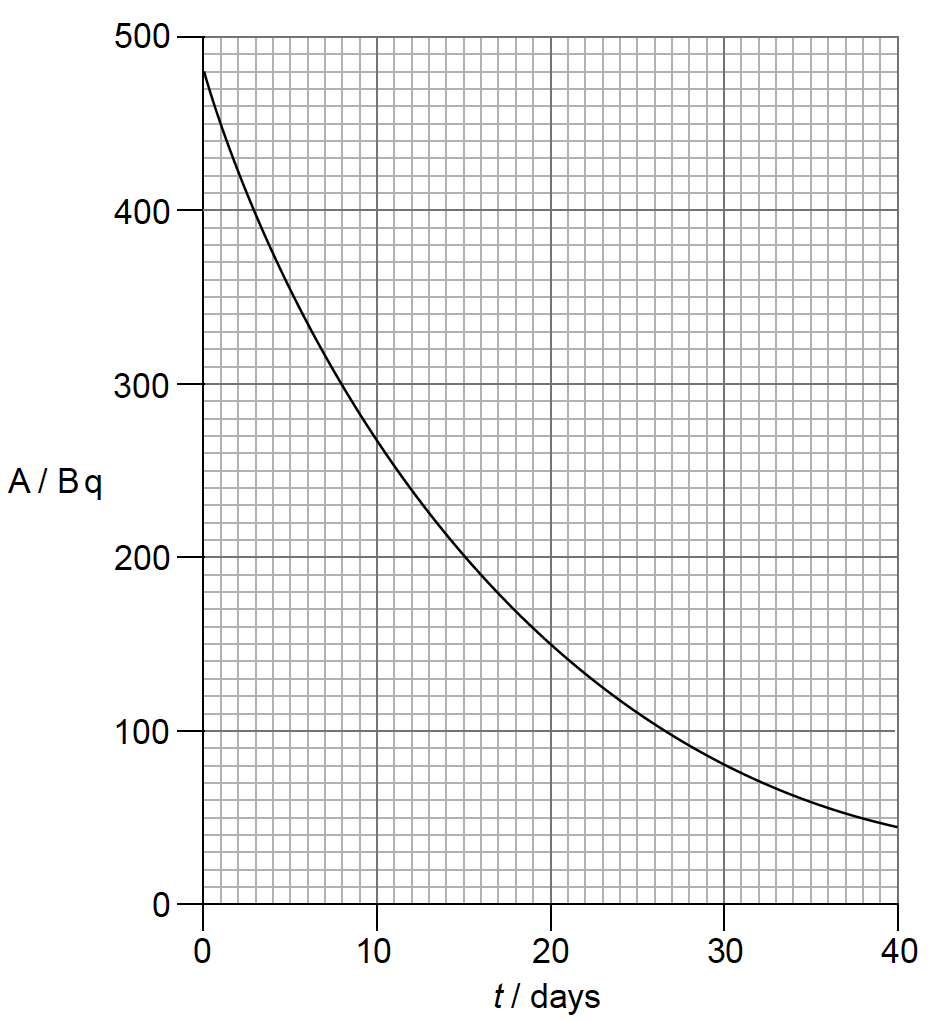Question
The magnesium nuclide \({ }_{12}^{27} \mathrm{Mg}\) decays by beta-minus \(\left(\beta^{-}\right)\)decay to form a nuclide of aluminium (Al).
(a) Write down the equation for this decay.[2]
\({ }_{12}^{27} \mathrm{Mg} \rightarrow\)
(b) Describe this decay in terms of the hadrons and quarks involved. [2]
(c) The aluminium nuclide is stable.
State and explain the properties of the strong nuclear force and of the electromagnetic force that allow stable nuclei to exist. [3]
▶️Answer/Explanation
Ans:
$
{ }_{12}^{27} \mathrm{Mg} \rightarrow{ }_{13}^{27} \mathrm{Al}+{ }_{-1}^0 \beta^{-} \quad \alpha+\overline{\nu_{\mathrm{e}}} \boldsymbol{}
$
«Electron \(»\) anti-neutrino specified \(\checkmark\)
b.Neutron \(\rightarrow\) proton \(\checkmark\)
\(\mathrm{d}\) quark \(\rightarrow\) u quark \(\checkmark\)
c.Strong force is short range \& electromagnetic force is long range \(\checkmark\)
Strong force is attractive between nucleons/neutrons \& protons\(\checkmark\)
Electromagnetic force is repulsive between protons\(\checkmark\)
Overall, the strong force dominates\(\checkmark\)
A nucleus of phosphorus-32 \(\left( {{}_{15}^{32}{\rm{P}}} \right)\) decays by beta minus (β−) decay into a nucleus of sulfur-32 \(\left( {{}_{16}^{32}{\rm{S}}} \right)\). The binding energy per nucleon of \({{}_{15}^{32}{\rm{P}}}\) is 8.398 MeV and for \({{}_{16}^{32}{\rm{S}}}\) it is 8.450 MeV.
a.
Determine the energy released in this decay.
The graph shows the variation with time t of the activity A of a sample containing phosphorus-32 \(\left( {{}_{15}^{32}{\rm{P}}} \right)\).

Determine the half-life of \({{}_{15}^{32}{\rm{P}}}\).
Quarks were hypothesized long before their existence was experimentally verified. Discuss the reasons why physicists developed a theory that involved quarks.
Answer/Explanation
Markscheme
a.
«energy/mass difference =» 8.450 – 8.398 «= 0.052 MeV»
Q = 1.7 or 1.66 or 1.664 MeV
OR
2.66 × 10–13 J
quark theory is simpler OR Occam’s razor example OR simple model explains complex observations
quotes experiment that led to quark theory, eg deep inelastic scattering or electron scattering
model incorporates strong/weak interactions/forces between protons and neutrons
model incorporates conservation rules
model explains differences between neutrons and protons OR